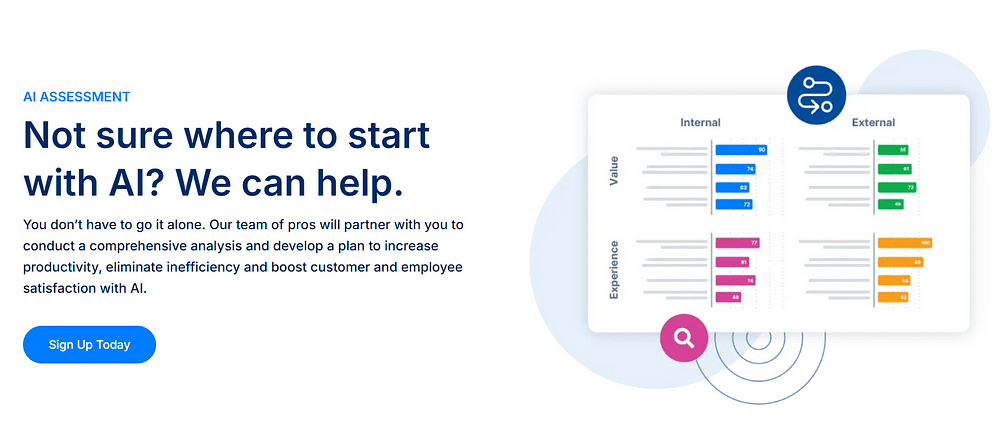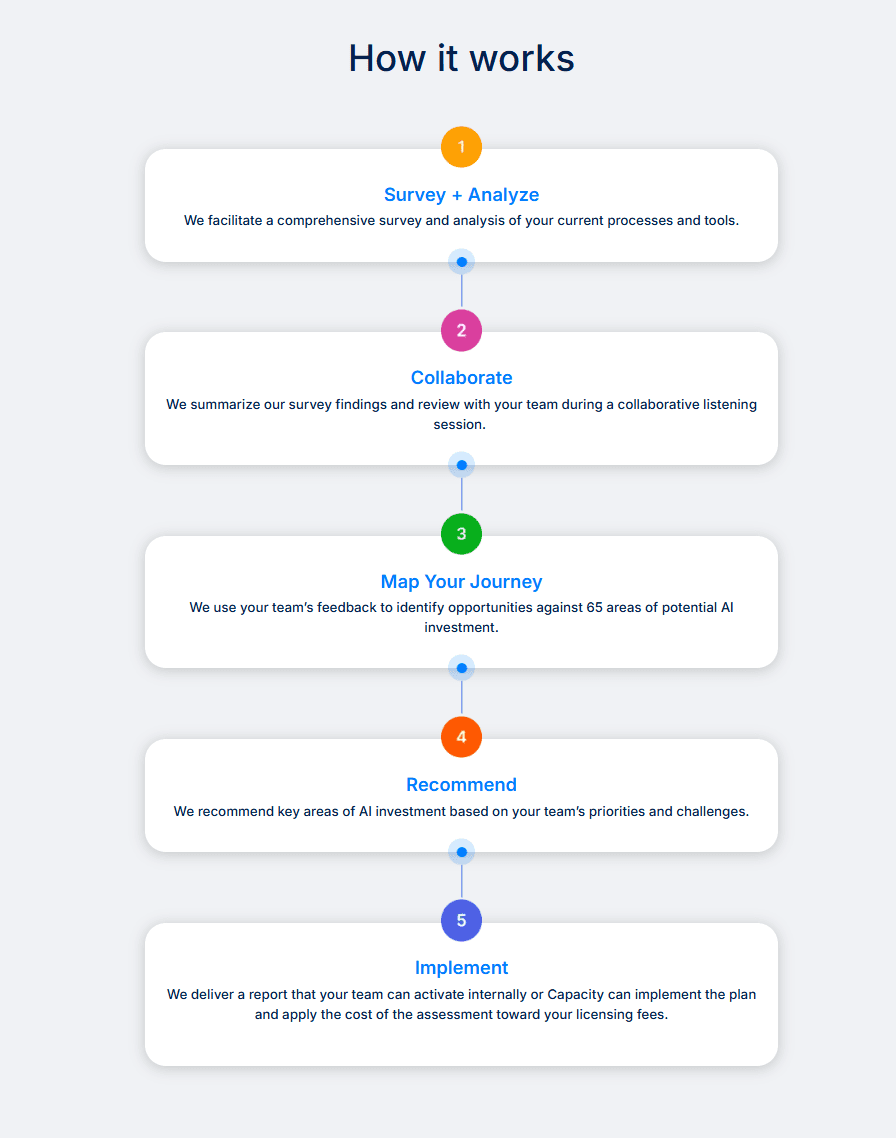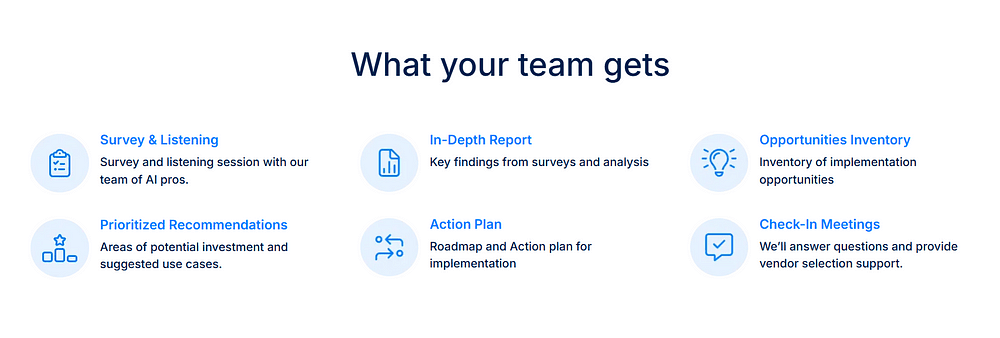In today’s rapidly evolving business landscape, artificial intelligence (AI) stands as a transformative force, reshaping industries and redefining operational paradigms. Integrating AI into your business operations isn’t merely a trend; it’s a strategic move that can drive efficiency, innovation, and competitive advantage.
This guide aims to provide you with a comprehensive roadmap for assessing and implementing AI within your organization using Capacity. Whether you’re just beginning to explore AI or looking to enhance your existing capabilities, this resource will equip you with the knowledge and tools to navigate the AI integration journey effectively.
Understanding AI Assessment

Definition and Scope
An AI assessment with Capacity is a systematic evaluation of your organization’s readiness to adopt artificial intelligence technologies. It involves analyzing current processes, data infrastructure, and organizational culture to identify areas where AI can be effectively integrated.
Benefits of Conducting an AI Assessment
- Strategic Alignment: Ensures that AI initiatives align with your business objectives, maximizing potential benefits.
- Risk Mitigation: Identifies potential challenges and risks, allowing for proactive management.
- Resource Optimization: Helps in allocating resources efficiently by pinpointing areas with the highest ROI potential.
Preparing for AI Integration

Assessing Organizational Readiness
Before diving into AI Assessment with Capacity, evaluate your organization’s preparedness. Consider factors such as technological infrastructure, data quality, and the willingness of your team to embrace change.
Identifying Key Business Objectives
Clearly define what you aim to achieve with AI. Whether it’s enhancing customer experience, streamlining operations, or driving innovation, having well-defined goals will guide your AI strategy.
Evaluating Existing Data Infrastructure
AI thrives on data. Assess the quality, accessibility, and governance of your current data to ensure it’s suitable for AI applications. A robust data foundation is crucial for successful AI integration.
Conducting the AI Assessment
Engaging Stakeholders
Involve key stakeholders from various departments to gain diverse perspectives and foster a collaborative approach to AI integration.
Mapping Business Processes
Document and analyze your current business processes to identify inefficiencies and areas where AI can add value.
Identifying AI Opportunities
Look for tasks that are repetitive, time-consuming, or data-intensive — these are prime candidates for AI automation.
Evaluating Potential Risks
Consider ethical implications, data privacy concerns, and potential disruptions to existing workflows. Addressing these risks upfront is essential for responsible AI adoption.
Developing an AI Implementation Strategy

Setting Clear Goals and Objectives
Establish specific, measurable, achievable, relevant, and time-bound (SMART) goals for your AI initiatives.
Selecting Appropriate AI Technologies
Choose AI tools and platforms that align with your business needs and technological capabilities. The right technology stack is vital for seamless integration.
Creating a Roadmap for Implementation
Develop a phased plan that outlines each step of the AI integration process, from pilot testing to full-scale deployment.
Establishing Governance and Compliance Frameworks
Implement policies and procedures to ensure ethical AI use, data privacy, and regulatory compliance. Strong governance frameworks are crucial for maintaining trust and accountability.
Building AI Capabilities
Investing in Infrastructure and Expertise
Ensure you have the necessary hardware, software, and skilled personnel to support AI initiatives. This may involve upgrading existing systems or hiring new talent.
Training and Upskilling Employees
Provide training programs to equip your team with the skills needed to work alongside AI technologies, fostering a culture of continuous learning.
Fostering a Culture of Innovation
Encourage experimentation and innovation within your organization to fully leverage AI’s potential.
Implementing AI Solutions

Pilot Testing and Iteration
Start with pilot projects to test AI applications in controlled environments, allowing for adjustments before full-scale implementation.
Scaling AI Initiatives
Once pilot projects are successful, gradually scale AI solutions across the organization, ensuring adequate support and resources.
Monitoring and Measuring Performance
Continuously monitor AI systems to assess performance, identify areas for improvement, and ensure alignment with business objectives.
Ensuring Responsible AI Practices
Addressing Ethical Considerations
Implement measures to prevent biases in AI algorithms and ensure fairness in decision-making processes.
Managing Data Privacy and Security
Adopt stringent data protection measures to safeguard sensitive information and comply with privacy regulations.
Ensuring Transparency and Accountability
Maintain transparency in AI operations and establish accountability mechanisms to build trust among stakeholders.



